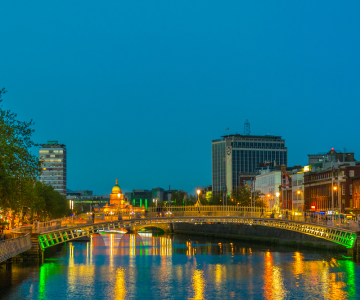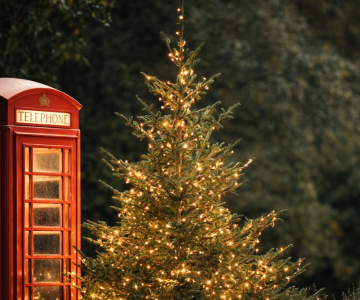
6 Ways to Celebrate Christmas in Dublin 2025
Want to experience the best of Christmas in Ireland?
Evie Lucas
Remember, remember, the 5th of November...
But why, exactly, do we remember the 5th of November?
That’s because it’s Bonfire Night, also known as Guy Fawkes Night: a unique British tradition that fills the sky with explosions of colour every year. Across the UK, people flock to supermarkets to stock up on fireworks, sparklers, and of course, lots of sticky toffee apples.
...Gunpowder, treason, and plot.
It all began in 1605, when 36 barrels of gunpowder were found hidden underneath the Houses of Parliament in Westminster. The plot? To murder the King and set off a Catholic uprising.
Curious about the history behind Bonfire Night? Read on for our ultimate guide to Britain’s most explosive national holiday. ✨
Back in the 16th century, religion divided England. After King Henry VIII famously broke away from the Catholic Church to annul his marriage, tensions between Catholics and Protestants grew. Over time, Catholics were increasingly seen as enemies.
When Guy Fawkes was caught in the Houses of Parliament with fuses in his pockets, he was tortured until he revealed the names of his fellow plotters. Each member was executed by public hanging, a common practice (and form of entertainment!) in 16th-century England.
Parliament then declared the 5th of November as a day of public thanksgiving. Churches held mandatory services, and celebrations – including bell ringing, bonfires, and fireworks – became commonplace.
💡 Did You Know? The word bonfire originally came from ‘bone fire’ – meaning fires made from animal bones!
Despite being the famous face of the Gunpowder Plot, Guy Fawkes wasn’t the ringleader. Fawkes was a soldier who most likely learned about explosives while fighting abroad. His role was to light the fuse under Parliament, but the real leader was a man called Robert Catesby.
Although the plot ultimately failed, over time, Fawkes became an anti-hero, symbolising rebellion for many. From the 1800s onwards, people began to burn effigies of Guy Fawkes on bonfires – a tradition that continues in some towns today.
While many of the original customs remain, modern Bonfire Night celebrations are more about toasting marshmallows than religion and politics. Families gather to watch firework shows, wave sparklers, and enjoy traditional treats like parkin, a treacle and ginger cake from Yorkshire.
Some towns still take it very seriously. Lewes – only a 20-minute train ride away from our Eastbourne English Centre – hosts the biggest Bonfire Night event in the world, where seven local societies parade through the streets with flaming torches, drummers, and some... controversial political effigies.
Studying at one of our English Centres and eager to get involved? Here are the best firework displays and local events in London and Eastbourne:
Eastbourne:
London:
✨Get Involved
Want to experience more of the UK beyond the classroom? Discover our English courses in London and Eastbourne and combine your language learning with real cultural immersion.

Want to experience the best of Christmas in Ireland?

As supermarket shelves fill up with festive stockings and novelty Santa hats, London is transforming into a winter wonderland.

Embrace the festive season as an opportunity to learn English through movies with our top 10 Christmas films to watch this December!
We use technology on our website to personalize content, customize and measure advertising, and analyze website traffic. By clicking OK, you agree to the use of these technologies in their entirety.
Learn more in our Privacy Policy.